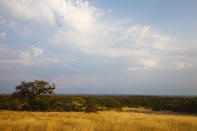Voortrekker Legacy

In 1852, Mokopane was called Vredenburg, which means “the town of peace” thus named by the Voortrekkers, a pioneering people who were either Dutch settlers or of their descendants. Then in 1858 the Voortrekker legacy continued when the town was renamed Pietpotgietersrust, in honour of Piet Potgieter, who had been fatally wounded in the Makapan Cave attack that took place four years prior. He was the eldest son of the Voortrekker leader Andries Potgieter. The memorialised town name was later shortened to Potgietersrus.
Piet Potgieter perished during the Makapan Cave attack, nearly a month long battle between the Kekana and the Voortrekkers. There were gross casualties on both sides, though the Kekana were the most evidently affected as their people were trapped in the caves, while the armed Voortrekkers awaited their emergence. The Makapan Caves was named after the great Kekana chief, Makapan, who came from a line of great Kekana chiefs. Historically, the caves of Limpopo were used as sites of refuge from clashes and dissension.
As the years progressed, many factors such as malaria and hostility between the Voortrekkers and the Ndebele people caused the trekkers to abandon the Potgieterus settlement in 1870. They changed their minds in 1890 and re-occupied the place, which paved the way for its current occupation as an important agricultural and mining town.
Cultural Collection
The Arend Dieperink Museum has within its confines an impressive cultural collection that allows visitors to gain insight into the Mokopane past. The museum has an interesting exhibit on the archaeology of the Makapan’s Caves that lies in the Makapan Valley World Heritage Site.
Makapan’s Caves are of particular interest in that it contains impressive fossils, which are more than 3 million years old. These fossils include the remains of Homo sapiens and hominin predecessors such as Australopithecus africanus, who used the caves as shelter. The cave’s limestone interior helped to preserve not only the fossilised remains of our former ancestors, but also the animals they hunted and the tools that they used to do so.
The museum exhibit includes an extensive collection of Sotho and Voortrekker artifacts, while it tells the history of the town depicting a range of times notable for the town of Mokopane. The museum itself is housed in a stone building originally built as a school.